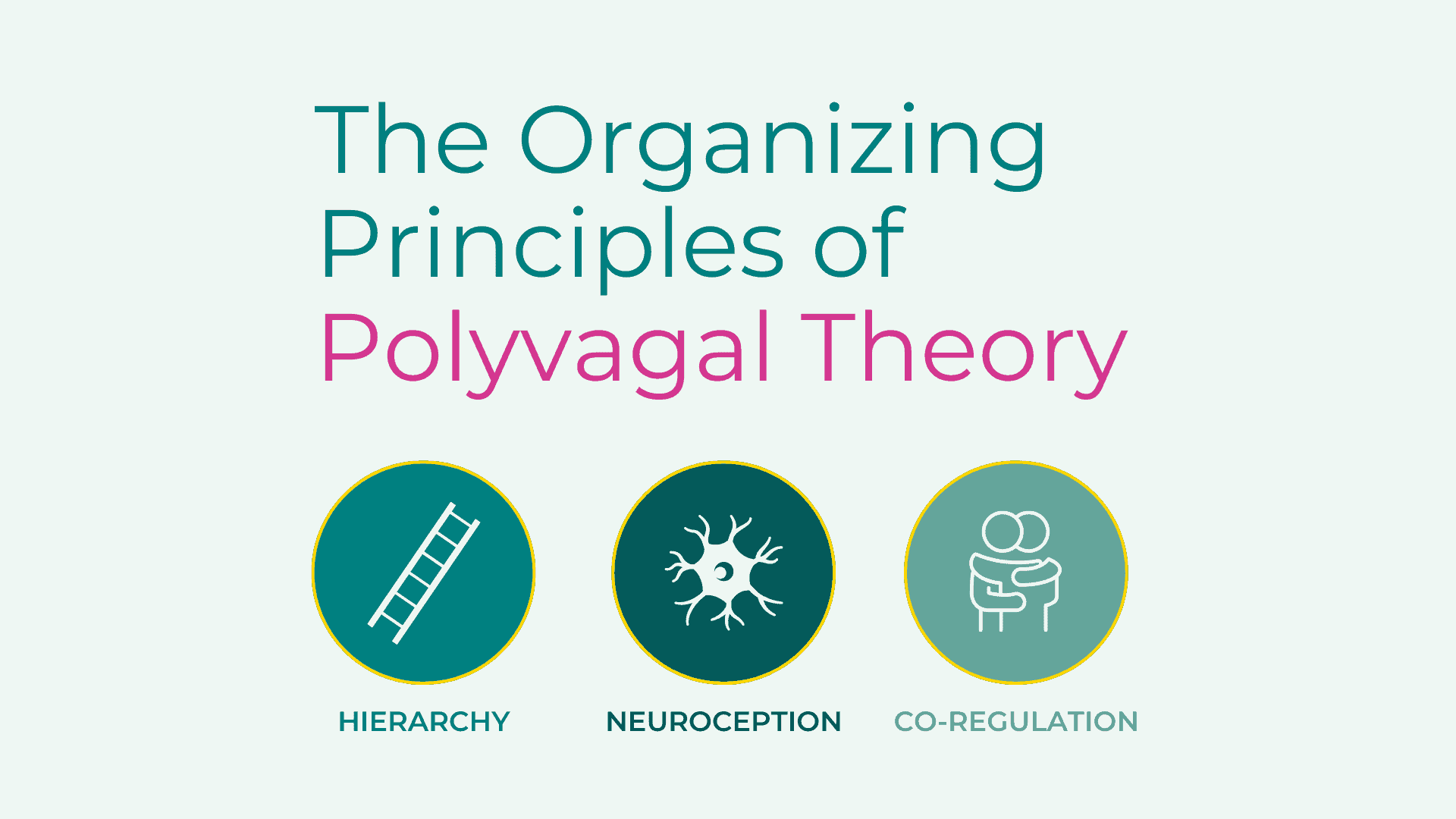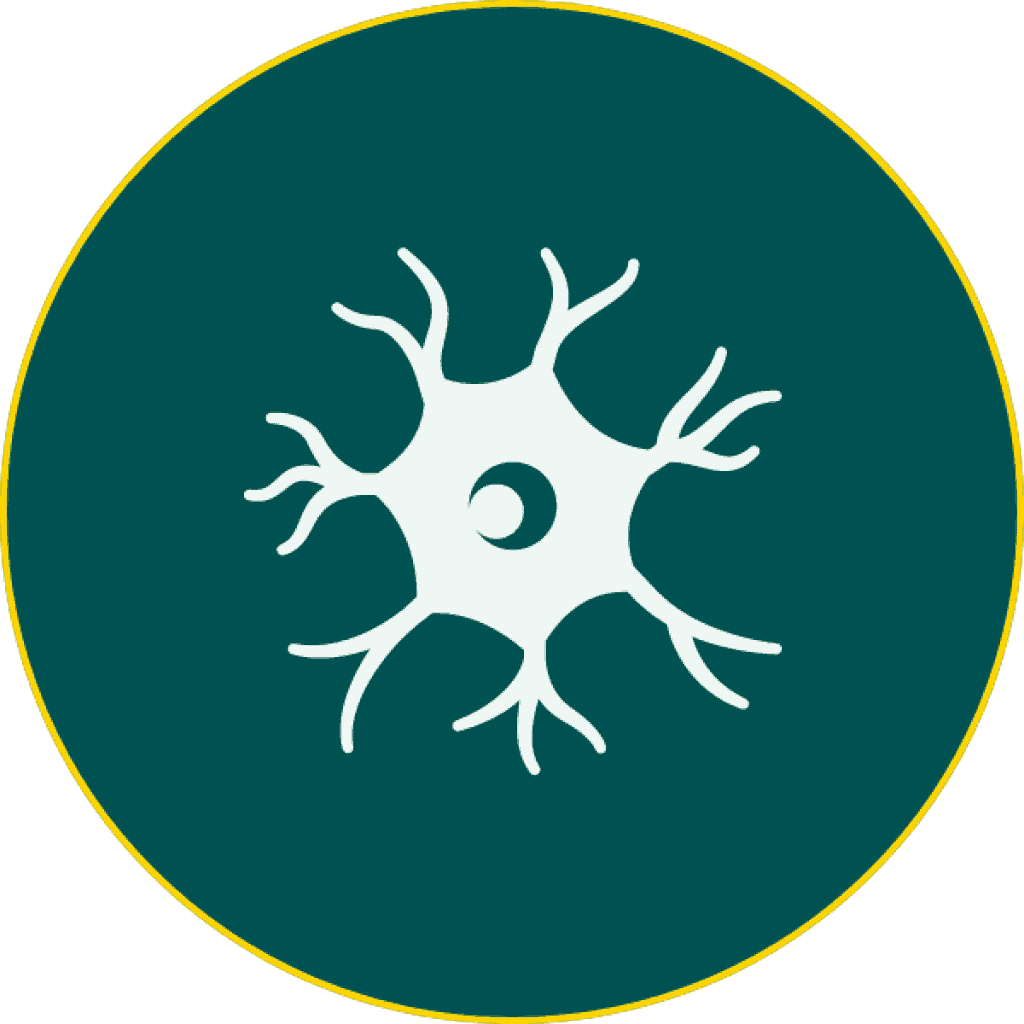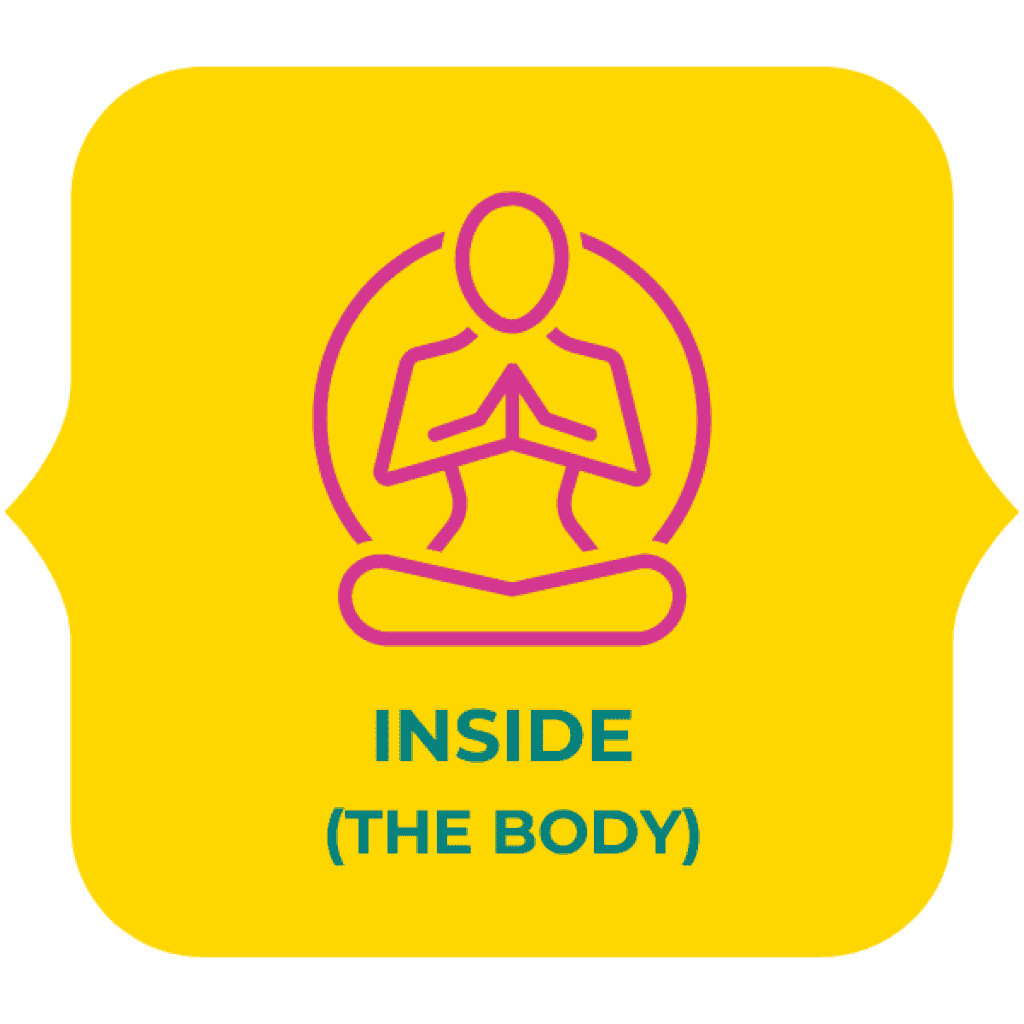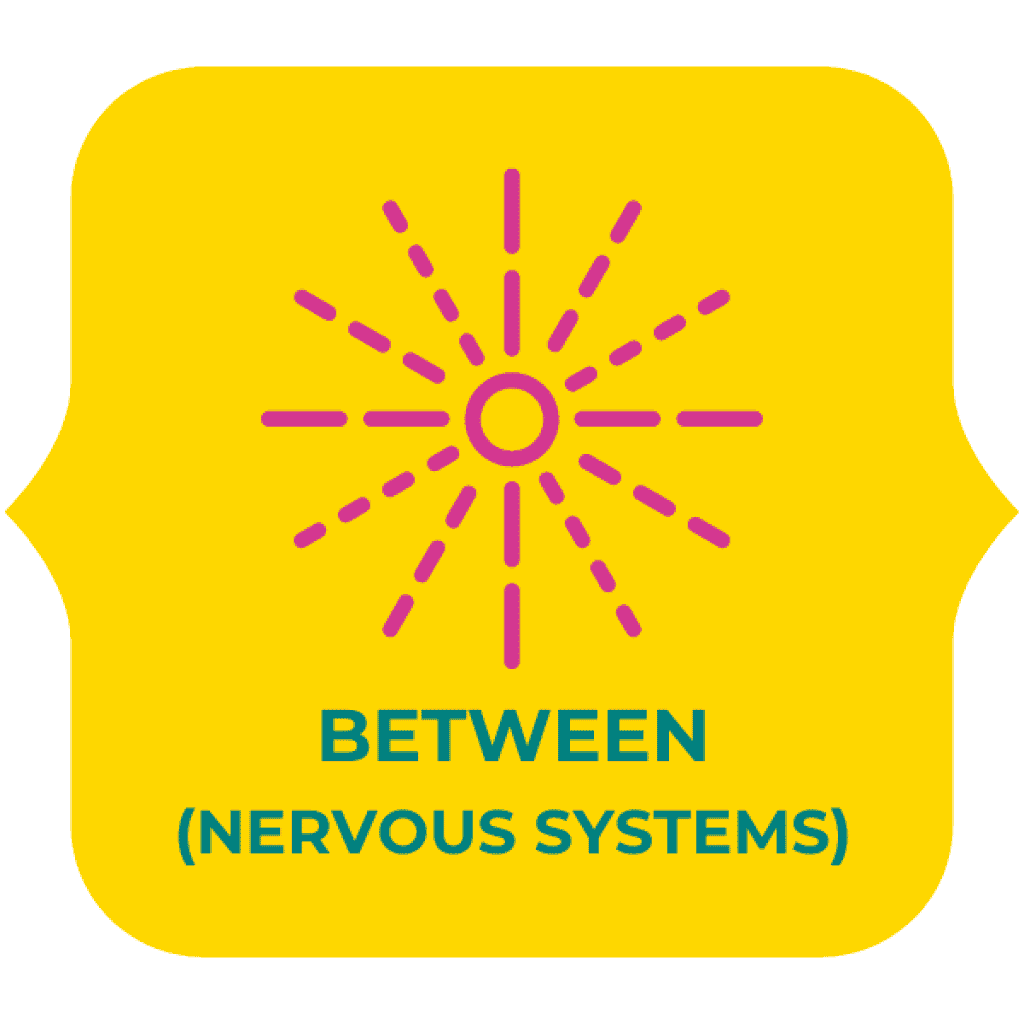Dr. Stephen Porges’ Polyvagal Theory has revolutionized the way we view the body’s response to stress, considering the autonomic nervous system (ANS) the foundation of our lived experience.
Originally, we viewed the body’s reaction to stress as binary: we’re either in a sympathetic or parasympathetic state. Polyvagal Theory, however, shows that there are multiple and blended states of arousal in response to real or perceived stress.
In simpler terms, Polyvagal Theory helps us understand how we engage in and interact with the world.

Free download: The Organizing Principles of Polyvagal Theory
Share with your colleagues and clients! The science of safety explained visually in an infographic format.

Principle 1: Hierarchy
The Polyvagal principle of hierarchy, envisioned as the autonomic ladder by Deb Dana (2018), explains the different physiological states that the vagus nerve can lead us to, depending on cues of safety or danger in our environment:
Ventral Vagal
In this state, our social engagement system is active in the ventral vagal pathway of the parasympathetic branch. Our nervous system is regulated, and we’re ready to connect and engage with others and what we’re experiencing in the now, while tuning out irrelevant stimuli. We feel safe and secure in the world.
Sympathetic
This state of the ANS activates when we feel a stirring of unease — when neuroception triggers a sense of danger. We feel the need to take action to avoid or resolve the perceived threat, best known as fight-or-flight response. The world feels dangerous or overstimulating.
Dorsal Vagal
A primal part of the human experience, the dorsal vagal pathway is the path of last resort — a place of immobilization when sympathetic response is insufficient at protecting us or eliminating the perceived threat. In this state, sense of hopelessness may take over, and our mind and body move into conservation mode. We feel disconnected from ourselves and from the world.
It is also possible to rapidly shift between or experience a blend of three states as you go about your day.

Principle 2: Neuroception
Neural circuits are a group of neurons interconnected by synapses. The group’s main role is to execute specific functions, but only when activated.
Neuroception, coined by Dr. Porges, is how neural circuits in our ANS subconsciously decide via our senses in every moment whether a person or situation is safe, dangerous or a threat — without involving the thinking parts of our brain.




Principle 3: Co-regulation
As humans, we long to be connected to others: it’s a biological imperative that we are born with that develops and lasts throughout our lifetime. This third principle describes how our nervous system looks for and needs others with whom we feel safe enough to connect and with whom we can create supportive and protective relationships.
Polyvagal Theory offers a framework for working with our nervous system to prepare for and help us develop these safe connections with other people. This in turn helps create a stronger personal foundation for self-regulation and health.

Co-regulation begins with the shared experience between a developing baby and its mother. Before birth, the baby hears its mother’s voice, which becomes a sound of safety. As an infant, it pairs the voice with a parent’s smiling face, and later as a toddler can look to them to find regulation (after falling down, for example).
Conversely, a lack of emotionally safe and nurturing relationships in childhood makes children less likely to become happy, healthy, independent and resilient adults (Winston & Chicot 2016).

Start your journey with Polyvagal Theory and create lasting change with your clients.
The Safe and Sound Protocol (SSP), developed by Dr. Stephen Porges, is a practical application of his Polyvagal Theory. An auditory intervention provided in the context of a therapeutic process, the SSP retunes the nervous system and is designed to reduce distress and auditory sensitivity, restore function, and enhancing social engagement, while promoting resilience at any age.
1. Dana, D. (2021) Anchored: How to Befriend Your Nervous System Using Polyvagal Theory. Colorado: Sounds True.
2. Dana, D. (2018). The Polyvagal Theory in Therapy: Engaging the Rhythm of Regulation. New York: W. W. Norton.



 © 2024 Unyte Health US Inc.
© 2024 Unyte Health US Inc.